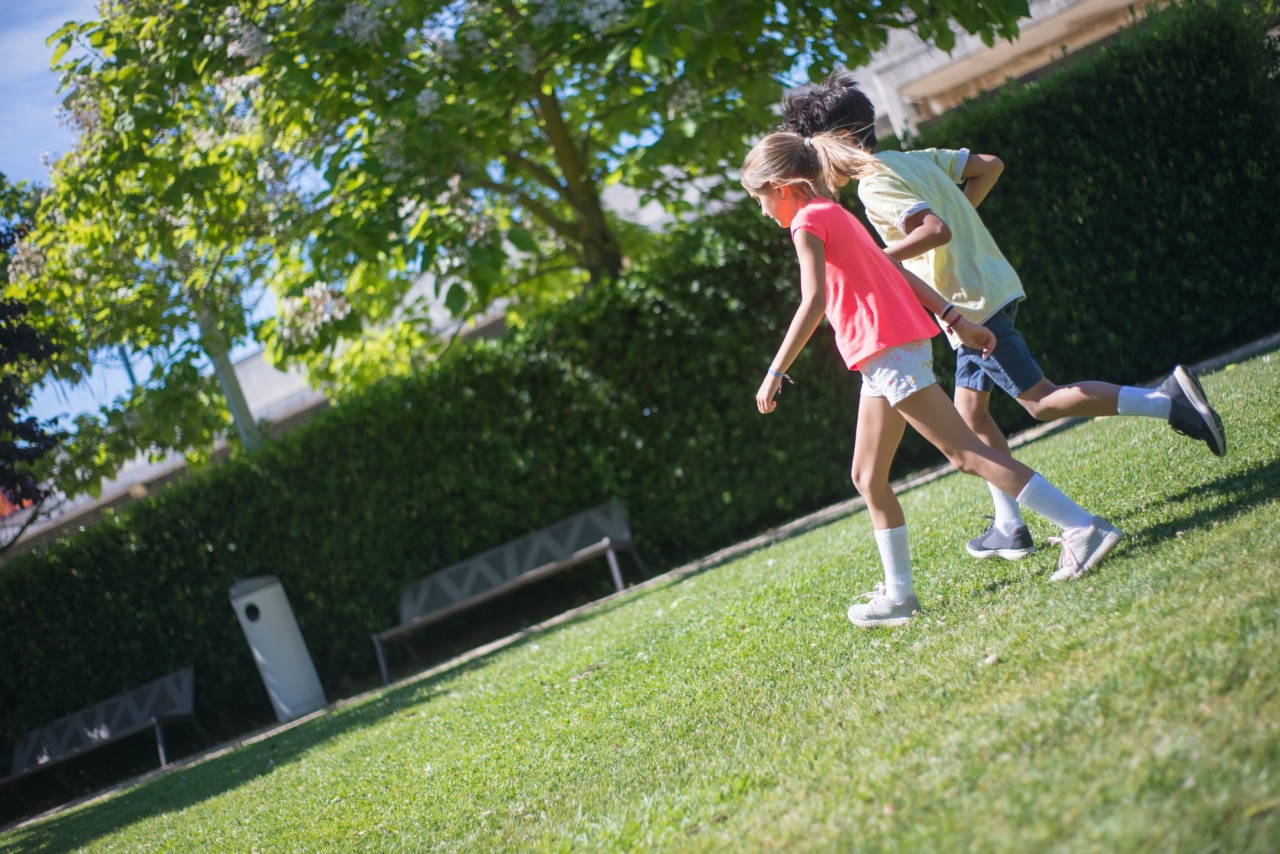Outdoor activities play a crucial role in the overall development of children. Not only do they provide physical exercise, but they also contribute to the mental and emotional well-being of young ones.
However, many parents are unaware of the impact outdoor activities can have on their children’s eye health. In this article, we will explore the importance of outdoor activities for promoting good eye health in children.
The benefits of outdoor activities
Engaging in outdoor activities has numerous benefits for children. Here are some of the key advantages:.
1. Sunlight and vitamin D
Exposing children to natural sunlight during outdoor activities helps their bodies produce vitamin D, which is essential for overall health.
Vitamin D has been linked to a reduced risk of developing certain eye conditions, such as myopia (nearsightedness).
2. Reduced screen time
Outdoor activities provide an opportunity for children to disconnect from screens and electronic devices. Excessive screen time has been linked to digital eye strain, dry eyes, and increased risk of myopia.
Encouraging outdoor playtime helps reduce the negative impact of screen time on eye health.
3. Enhanced distance vision
Outdoor activities involve looking at objects in the distance, such as trees, buildings, and other natural landscapes. Regularly engaging in such activities helps children improve their distance vision, reducing the risk of myopia progression.
4. Eye muscle exercise
Outdoor activities often involve physical movements that require different eye muscles to work together.
Activities such as running, climbing, and playing sports promote the development and coordination of eye muscles, leading to improved visual skills.
5. Increased exposure to nature
Spending time in nature during outdoor activities has a calming and therapeutic effect on children. Being surrounded by greenery and natural scenery reduces eye fatigue and provides a refreshing break from indoor environments.
The impact of outdoor activities on eye health
Engaging in outdoor activities has a positive impact on various aspects of eye health in children:.
1. Myopia prevention
Myopia, or nearsightedness, has become increasingly common among children in recent years.
Studies have shown that spending more time outdoors, particularly during early childhood, can help reduce the risk of developing myopia or slow down its progression. The exact mechanism behind this relationship is still not fully understood, but exposure to natural light and reduced near-work activities seem to play a significant role.
2. Reduced eye strain
Excessive screen time and prolonged near-work activities can lead to eye strain and discomfort, commonly known as computer vision syndrome. Outdoor activities provide a natural break and allow children’s eyes to rest and recover.
Spending time away from screens helps alleviate symptoms of eye strain, such as dry eyes, blurred vision, and headaches.
3. Balanced visual development
Engaging in a variety of outdoor activities promotes balanced visual development. Unlike using screens or focusing on near objects for extended periods, outdoor play encourages children to use their eyes in different ways.
This strengthens the eye muscles, enhances depth perception, and improves hand-eye coordination.
4. Protection against digital eye strain
Outdoor activities act as a protective measure against digital eye strain caused by excessive use of electronic devices. By spending time outdoors, children get a break from staring at screens, and their eyes have a chance to rest and recover.
This reduces the risk of developing digital eye strain symptoms such as eye redness, irritation, and blurred vision.
Tips for incorporating outdoor activities into children’s routines
To ensure children get maximum benefits from outdoor activities, here are some tips to consider:.
1. Encourage daily outdoor playtime
Set aside time each day for children to engage in outdoor play. Encourage them to explore nature, play sports, or participate in activities that involve distance vision.
2. Limit screen time
Establish clear guidelines regarding screen time limits. Encourage children to take frequent breaks from screens and spend time outdoors instead.
3. Plan outdoor family activities
Organize trips or outings that involve outdoor activities for the whole family. This not only promotes good eye health but also creates lasting memories and strengthens family bonds.
4. Provide appropriate eye protection
When engaging in outdoor activities, ensure children wear appropriate eye protection. Sunglasses with UV protection and sports goggles can help shield their eyes from harmful UV rays and potential injuries.
Conclusion
Outdoor activities are essential for the overall development and well-being of children, including their eye health. Encouraging children to spend more time outdoors can help prevent myopia, reduce eye strain, and promote balanced visual development.
By incorporating outdoor activities into their routines, parents can contribute to their children’s long-term eye health and overall happiness.



























